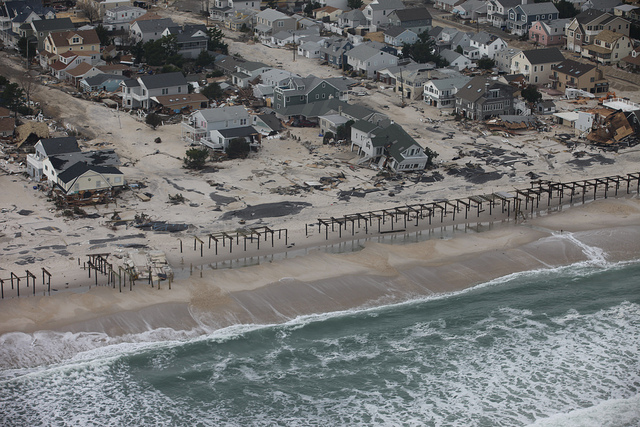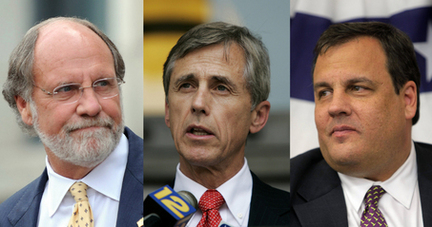New Jersey Future Blog
New Jersey Future to Honor Brendan Byrne
November 3rd, 2011 by Peter Kasabach
 On Nov. 20, New Jersey Future will honor former Governor Brendan T. Byrne at a reception at the Morven Museum & Gardens in Princeton.
On Nov. 20, New Jersey Future will honor former Governor Brendan T. Byrne at a reception at the Morven Museum & Gardens in Princeton.
- Gov. Byrne’s administration was marked by a series of landmark measures that have left an indelible impression on New Jersey’s landscape, including adoption of a long-term program for protecting the Pinelands; establishment of NJ Transit, the first statewide public transit agency in the nation; and restoration of the Hudson waterfront, highlighted by the opening of Liberty State Park.
- The Byrne administration also ushered in a new era in New Jersey governance, with the state not only assuming a larger share of financing public education, but also taking on increased responsibility for economic development and environmental protection.
Fiscal Issues Dominate a Troubled First Term
When Brendan Byrne reminisces about his eight years (1974-1981) as governor of New Jersey, he often cites protection of the Pinelands as one of his greatest accomplishments. In the 1970s, developers were poised to transform this wilderness area into sprawling suburbia, complete with a supersonic jetport four times larger than Newark, LaGuardia and JFK airports combined. By executive order, Byrne slapped a moratorium on development in the region, then pushed for a more permanent solution. In 1979, he achieved this solution through passage of the Pinelands Protection Act, which established the Pinelands Commission and authorized it to adopt the comprehensive management plan that now preserves and protects this environmentally sensitive area.
Pinelands protection was not even on the radar screen when Byrne had arrived in Trenton five years earlier. His first term was dominated (as virtually every governor’s first term has been dominated for the past four decades) by fiscal crisis. As a candidate, Byrne had declared he saw no need “for the foreseeable future” for the state to impose an income tax. But the combination of a looming budget deficit and a state Supreme Court order to reform public school financing turned him from skeptic to advocate. His tax-reform efforts were rebuffed by legislators until the Supreme Court ordered all public schools closed on July 1, 1976. Shortly thereafter, the Legislature passed a sweeping package of bills that increased the state’s share of public school costs to meet the Supreme Court mandate, created new programs of state revenue sharing and provided property tax rebates to homeowners, all financed by the first state income tax.
The controversial school-finance and tax-reform program contributed to a sharp fall in public support for the governor, who was given little chance to win re-election in 1977. But he squeaked past a crowded field of Democratic primary challengers in June, then overcame a 20-point deficit in most polls to defeat Republican state Sen. Raymond H. Bateman in the fall, primarily by attacking as irresponsible a plan Bateman put forward with former U.S. Treasury Secretary William Simon for replacing the income tax. In a memorable October debate, Byrne offered the deadpan suggestion that the so-called “Bateman-Simon” plan should henceforth be referenced by its initials — an early exhibition of the kind of humor that would make Byrne a popular and entertaining after-dinner speaker following his years as governor.
Land Use Draws Attention in Activist Second Term
Aided by the momentum of his come-from-behind re-election victory, Byrne’s second term was marked by a series of initiatives, highlighted by passage of the Pinelands Protection Act. He reorganized the governor’s staff, creating the position of chief of staff and establishing an office of policy and planning, which coordinated planning and development through a Cabinet Development Committee. Capital projects included the opening of new casino-hotels and related development in Atlantic City; investment in development and redevelopment projects throughout the state under the auspices of the newly created Economic Development Authority; and increased attention to infrastructure with the construction and modernization of sewage and water supply facilities.
In the final year of his administration, Byrne proposed increasing state capital support for urban redevelopment through the Community Development Bond Act, which later provided the seed money for construction of the New Jersey Performing Arts Center in Newark and the Liberty Science Center in Jersey City. He also proposed new tax incentives for urban investment, which later were adopted through passage of the state enterprise zone program.
The Byrne years were so eventful, the former governor is now fond of recounting, that he rarely had a free moment to conjure up any momentous new ideas. But there was one day, he says, when he didn’t have anything else to do — so he decided to change the state’s license plates. Sure enough, in 1979, for the first time in 20 years, out went the old familiar straw-and-black plates and in came the bold new buff-and-blue. Like virtually everything else Byrne did, this change was highly controversial — and remained so until straw-and-black plates made a comeback in 1992, rendering Byrne’s buff-and-blue a relic of bygone days.
Fortunately for New Jersey, most of Brendan Byrne’s other accomplishments are still highly visible. For this reason, New Jersey Future is proud to honor him on Nov. 20. Register here for the event.
















